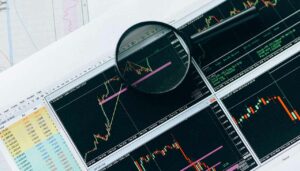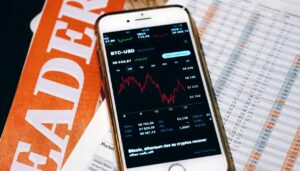Master the Forex Market: Discover the Hidden Secrets to Trading Success

If you’re looking to enter the world of foreign exchange trading, commonly known as Forex, then you need to be aware of the risks and challenges associated with this highly volatile market. However, with the right knowledge and strategy, you can also reap significant rewards. In this guide, we’ll take a deep dive into the hidden secrets of trading success in the Forex market. From understanding market trends to developing a solid risk management plan, we’ll cover everything you need to know to master Forex trading and achieve your financial goals. Let’s get started!
Understanding the Forex Market
The Forex market, also known as the foreign exchange market, is a global decentralized market for trading currencies. It is the largest and most liquid financial market in the world, with an estimated daily trading volume of over $5 trillion.
The Forex market works by exchanging one currency for another, to make a profit from changes in currency values. Currency pairs are traded 24 hours a day, five days a week, across different time zones and continents.
The key players in the Forex market include central banks, commercial banks, investment firms, hedge funds, and retail traders. Forex trading is highly influenced by economic indicators, such as inflation rates, GDP, and unemployment, as well as global events and political news.
To succeed in Forex trading, it is important to understand market trends and analysis. This involves studying charts and technical indicators, as well as keeping up-to-date with economic news and events that may affect currency values. In the next section, we will discuss fundamental analysis in more detail.
Fundamental Analysis
Fundamental analysis is a method of analyzing the Forex market by examining economic, financial, and other qualitative and quantitative factors that impact currency values. This involves understanding the underlying forces that drive supply and demand for a currency.
Some of the key economic indicators that traders use for fundamental analysis include inflation rates, interest rates, GDP growth, employment figures, and trade balance data. For example, if a country’s interest rates are raised, this can attract foreign investment and increase demand for its currency, leading to a rise in its value.
In addition to economic indicators, global events, and political news can also have a significant impact on currency values. For example, a country experiencing political unrest or facing geopolitical tensions may see a decrease in demand for its currency, leading to a drop in its value.
Interpreting financial reports is also an important part of fundamental analysis. This includes analyzing company earnings reports, balance sheets, and other financial statements to gain insight into the health of a particular industry or sector.
Fundamental analysis is often used in combination with technical analysis, which involves studying charts and identifying patterns and trends. By using both methods of analysis, traders can gain a more comprehensive understanding of the Forex market and make more informed trading decisions.
Technical Analysis
Technical analysis is another method of analyzing the Forex market that involves studying charts and identifying patterns and trends. Traders use technical analysis to identify potential entry and exit points for their trades and to make predictions about future price movements.
Some common tools used in technical analysis include chart patterns, such as support and resistance levels, trend lines, and Fibonacci retracements. Traders also use indicators and oscillators, such as moving averages, relative strength index (RSI), and stochastic oscillators, to help identify momentum and potential price reversals.
One of the key benefits of technical analysis is that it allows traders to identify potential trading opportunities in real time. For example, if a currency pair reaches a key support level, this may indicate a buying opportunity, while a breach of a resistance level may indicate a selling opportunity.
However, it is important to note that technical analysis can be subjective, and different traders may interpret the same data differently. It is also important to consider other factors, such as fundamental analysis and global events when making trading decisions.
By combining technical analysis with other methods of analysis, traders can gain a more comprehensive understanding of the Forex market and make more informed trading decisions.
Risk Management Strategies
Risk management is a crucial aspect of Forex trading, as the market can be highly volatile and unpredictable. Effective risk management strategies can help traders minimize their potential losses and protect their capital.
One common risk management strategy used by Forex traders is setting stop-loss orders. A stop-loss order is an instruction to close a trade automatically if the price of a currency pair reaches a certain level. This helps limit the potential losses of a trade if the market moves against the trader.
Another important risk management strategy is calculating the risk-to-reward ratio. This involves assessing the potential profit of a trade compared to the potential loss. Traders should aim to have a risk-to-reward ratio of at least 1:2, meaning they are looking to make at least twice the amount they are risking.
Diversifying your portfolio is also a key risk management strategy. This involves spreading your investments across different currency pairs and other financial instruments. By diversifying your portfolio, you can reduce your overall exposure to risk and minimize the impact of any single trade on your account balance.
Managing emotions and avoiding common pitfalls is another important part of effective risk management. This includes avoiding overtrading, resisting the urge to chase losses, and staying disciplined and focused on your trading plan.
By implementing effective risk management strategies, Forex traders can increase their chances of success in the market and achieve their financial goals.
Conclusion
In conclusion, mastering the Forex market requires a deep understanding of its workings and the development of effective strategies to manage risk and maximize profits. By using both fundamental and technical analysis, traders can gain a comprehensive understanding of market trends and make informed trading decisions.




